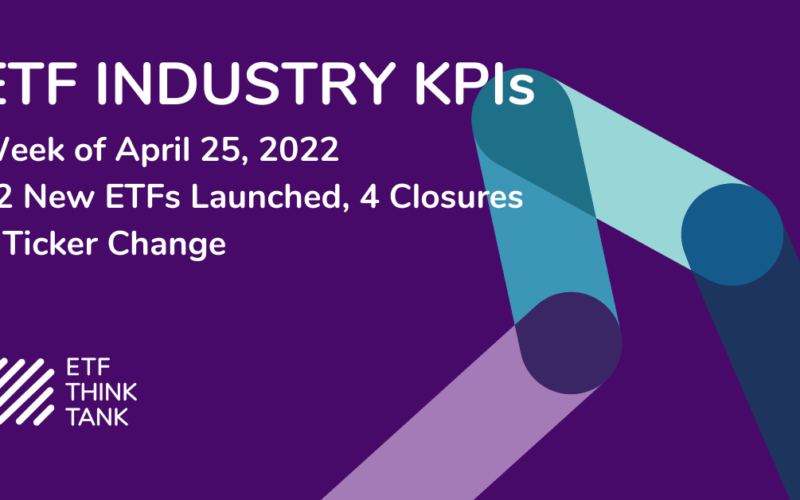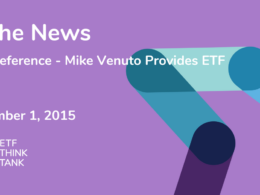By now, you’ve probably heard that Elon Musk is acquiring Twitter for about $44 billion, or $54.20 a share, in a deal set to close later this year. The acquisition announced this past Monday (April 25) is expected to lead Twitter off public markets and into private hands.
As an ETF investor, does this matter to you? It’s easy to overlook single stock news in a space where we boast about the power of diversification, but at the end of the day, equity ETFs are portfolios of companies’ stocks – and Twitter is a popular holding among many funds. The company’s privatization will impact the ETFs that own it, and that impact will vary depending on how much the fund allocates to it.
Once a company goes private – as Musk is expected to do with Twitter – it’s no longer listed on public exchanges. Buying and selling that stock becomes the trade of the private equity world, and no longer the turf of investors transacting in the secondary market.
Until this deal is all said and done, trading Twitter shares remains fair game, but we now know the clock is ticking on this stock, and ETF portfolios will have to adjust accordingly.
Twitter’s ETF Footprint
Among U.S. equity ETFs alone, there are at least 164 funds today that hold a combined 118 million shares of Twitter. That’s almost $6 billion worth of Twitter stock at early-week prices sitting in ETF portfolios.

These holdings in Twitter are found across all types of strategies. From traditional passive ETFs such as SPDR S&P 500 ETF Trust (SPY) and Vanguard Total Stock Market ETF (VTI), to the Communication Services Select Sector SPDR Fund (XLC), where Twitter represents some 4.2% in a portfolio comprising 26 stocks, to thematic plays such as Invesco Dynamic Media ETF (PBS) and the First Trust Dow Jones Internet Index Fund (FDN), Twitter is everywhere. Active managers like this stock, too.
Most of the Twitter shares sit in passive ETFs, both traditional market-cap weighted approaches and non-traditional index ETFs (smart-beta types), where Twitter is far more common a holding, but traditionally in smaller weightings.

Some of the biggest positions tied to Twitter in equity ETFs today include the following:

In the case of PBS, for example, Twitter is the single largest holding in a portfolio of only 29 stocks. Changes to this allocation – deletion of this position – will make a significant difference for this fund.
How Twitter Leaves ETFs
The process of adding and deleting a stock from an ETF centers on that fund’s underlying index methodology in the case of passive funds, or at the discretion of its active manager. No two are the same.
For passive ETFs, the activity will begin in the index world.
In the case of SPY, for example, which tracks the S&P 500 Index, the decision of how to go about deleting Twitter (and when) will come down to the S&P Index Committee because the S&P 500 is run by a committee. We know for certain that, in this case, the deletion will be followed by an addition of a new name in its place. The S&P 500 is designed to hold 500 stocks, so additions and deletions always translate into replacements. All eyes will be on what stock makes the cut.
You’d imagine that’d be the case across several indexes that “count” holdings, like the Russell 1000, 2000 and 3000. But as one index provider put it, that may not be the case. In most cases, the numbers aren’t actually representative of a “fixed count” of index constituents. They are more like guidelines.
That means that we are unlikely to see extracurricular index reconstitutions depending on when the deal closes and the process of privatizing the business concludes. We could also see that many opt to simply let Twitter go away and reallocate that position across other stocks in the index, pro rata.
It will be interesting to see in how many of these benchmarks, deleting Twitter, equates to additions on the other side. We could speculate that thematic ETFs – especially the niche-er ones – will be more creative in finding ways to replace Twitter in an effort to capture the “social media” and communications theme often associated with Twitter, but then again, it will come down to each index provider.
Once that work is done by the indexes, the real work begins in the hands of asset managers who then need to execute the portfolio change in order to preserve index tracking as closely as possible. It should be a busy season for ETF trading desks, post deal.
Meanwhile, among active managers who aren’t guided by any benchmark, removing a company like Twitter should be fun to watch. In the realm of true discretionary decision-making, it will be interesting to see how quickly – or how slowly – these adjustments are made, and whether deletions trigger any interesting portfolio additions that could change the return profile of the ETF.
This may be a good time to look where Twitter sits in your ETF portfolios today, anticipating that change to the overall exposure and path of returns is upon us.
Disclosure
All investments involve risk, including possible loss of principal.
This material is provided for informational purposes only and should not be considered an individualized recommendation or personalized investment advice. The investment strategies mentioned may not be suitable for everyone. Each investor needs to review an investment strategy for his or her own particular situation before making any investment decision.
All expressions of opinion are subject to change without notice in reaction to shifting market conditions. Data contained herein from third party providers is obtained from what are considered reliable sources. However, its accuracy, completeness or reliability cannot be guaranteed.
Examples provided are for illustrative purposes only and not intended to be reflective of results you can expect to achieve.
The value of investments and the income from them can go down as well as up and investors may not get back the amounts originally invested, and can be affected by changes in interest rates, in exchange rates, general market conditions, political, social and economic developments and other variable factors. Investment involves risks including but not limited to, possible delays in payments and loss of income or capital. Neither Toroso nor any of its affiliates guarantees any rate of return or the return of capital invested. This commentary material is available for informational purposes only and nothing herein constitutes an offer to sell or a solicitation of an offer to buy any security and nothing herein should be construed as such. All investment strategies and investments involve risk of loss, including the possible loss of all amounts invested, and nothing herein should be construed as a guarantee of any specific outcome or profit. While we have gathered the information presented herein from sources that we believe to be reliable, we cannot guarantee the accuracy or completeness of the information presented and the information presented should not be relied upon as such. Any opinions expressed herein are our opinions and are current only as of the date of distribution, and are subject to change without notice. We disclaim any obligation to provide revised opinions in the event of changed circumstances.
The information in this material is confidential and proprietary and may not be used other than by the intended user. Neither Toroso or its affiliates or any of their officers or employees of Toroso accepts any liability whatsoever for any loss arising from any use of this material or its contents. This material may not be reproduced, distributed or published without prior written permission from Toroso. Distribution of this material may be restricted in certain jurisdictions. Any persons coming into possession of this material should seek advice for details of and observe such restrictions (if any).











